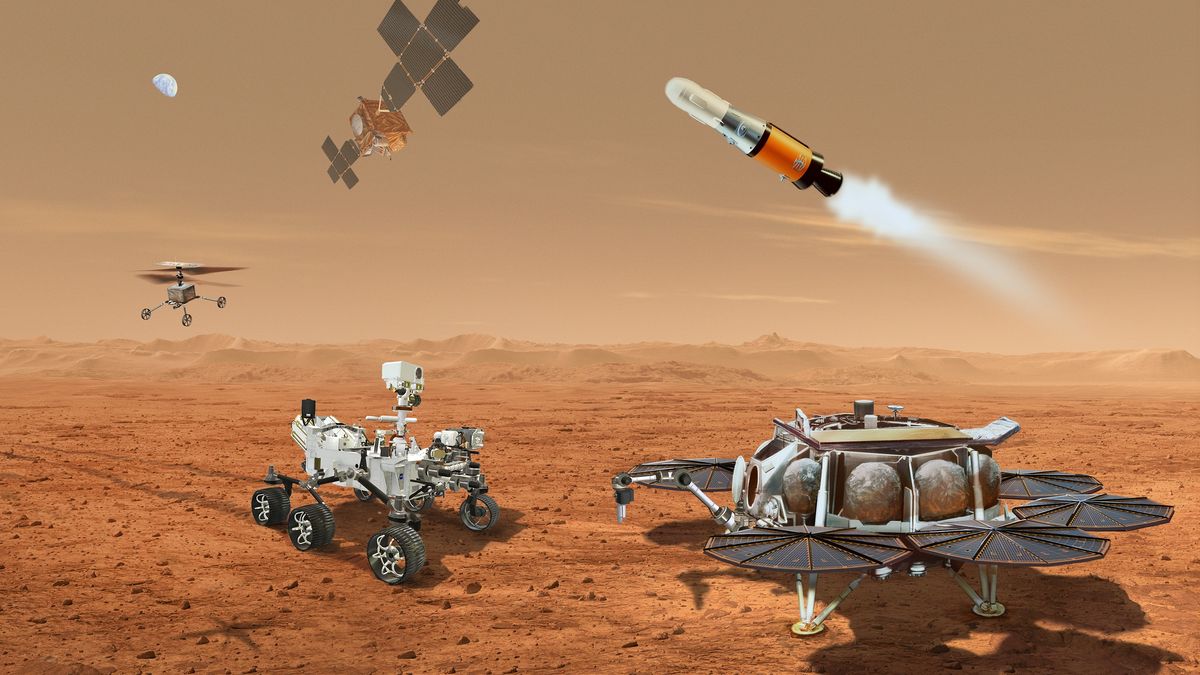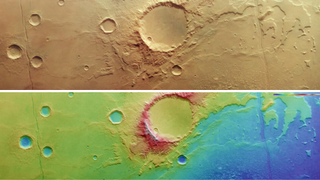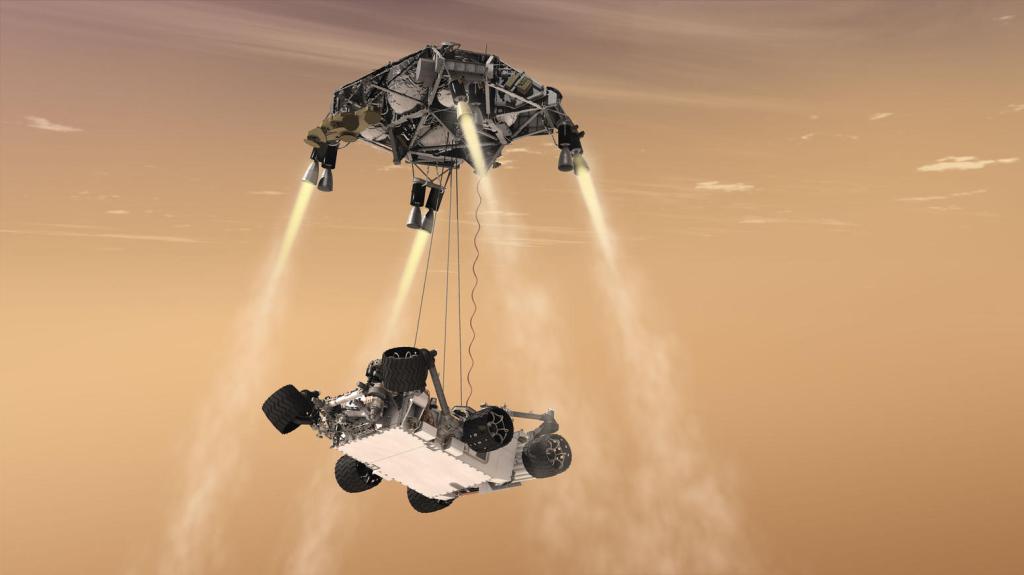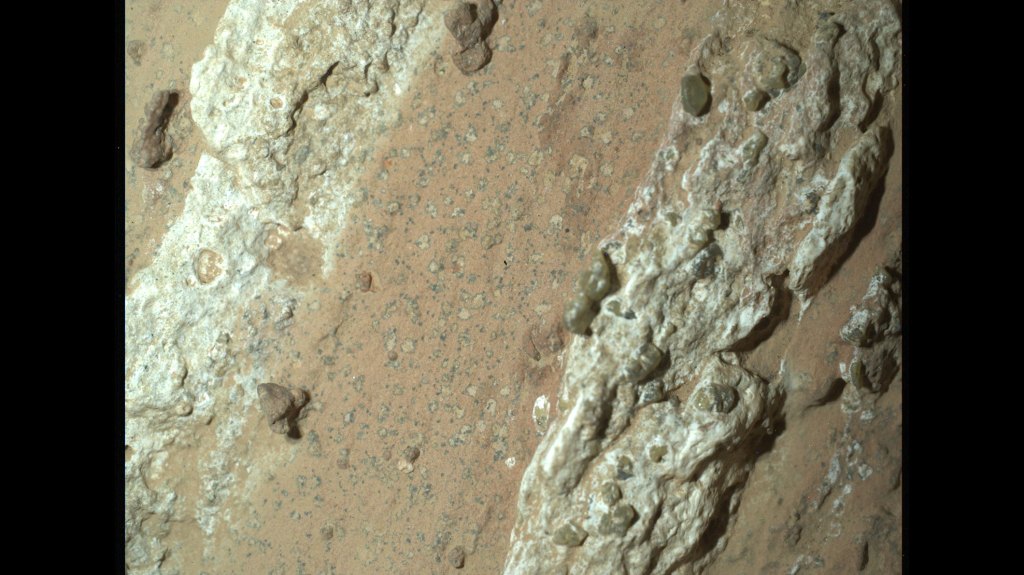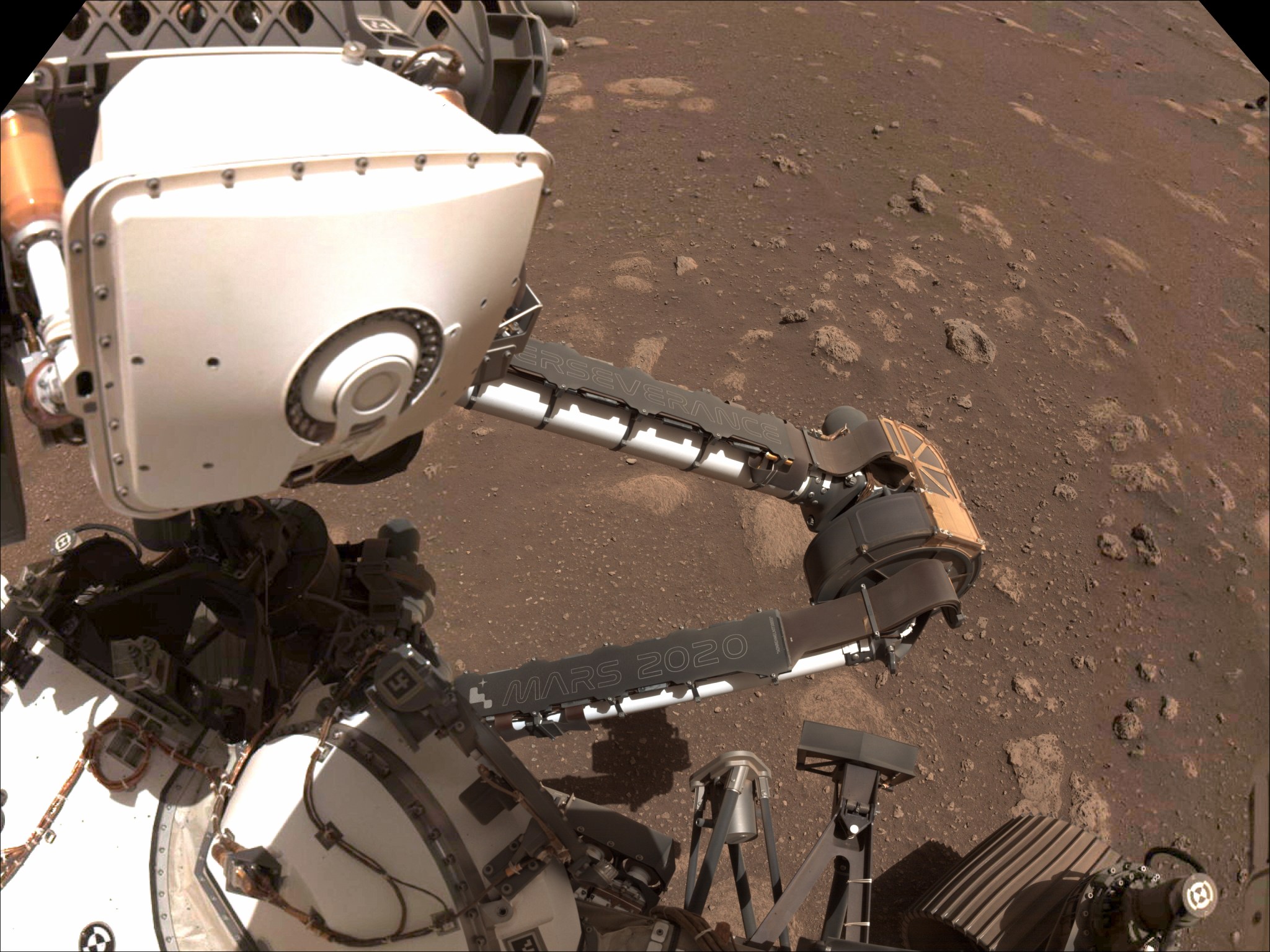Computer simulations suggest that Mars’ puzzling moons, Phobos and Deimos, may have been formed from debris created when a large asteroid wandered dangerously close to the Red Planet. This new model proposes that Phobos and Deimos resulted from the wreckage of a larger asteroid that wandered too close to Mars and crossed its Roche limit — the distance at which gravitational tidal forces emanating from the planet became too great and tore the asteroid apart. “It’s exciting to explore a new option for the making of Phobos and Deimos —…
Read MoreTag: Mars
Can Rocket Lab come to NASA’s rescue with new Mars sample-return plan?
NASA’s troubled Mars sample-return program may have a new lifeline, in the form of a proposal from private space company Rocket Lab to help save the mission. When the Perseverance rover landed on Mars in 2021, the plan was to follow up with a mission in the early 2030s that would retrieve the canisters containing samples of Martian dirt, rocks and atmosphere collected by the rover, and bring them to Earth for detailed study. The hope is that the samples will be able to tell researchers about conditions on Mars…
Read MoreMars leaks faster when closer to the sun
Seasonal changes can have a dramatic effect on how quickly Mars loses its water to space, a joint study between the Hubble Space Telescope and NASA’s Mars Atmosphere and Volatile Evolution (MAVEN) mission has shown. Over three billion years ago, Mars was warm and wet, with large bodies of water on its surface and a thicker atmosphere. Today, however, Mars is desolate, cold and dry. So, what happened to all the water? “There’s only two places water can go,” John Clarke of the University of Boston said in a statement.…
Read MoreMars Express orbiter takes a deep dive into ancient Red Planet lake (images)
A Mars orbiter has just taken a “deep dive” into an ancient Martian lake, figuratively, at least. Larger than any lake currently on Earth, the dried-up remnants of this ancient lakebed were just captured in incredible detail by the European Space Agency (ESA) Mars Express spacecraft, which has been orbiting the Red Planet since 2003. “This patch of Mars — shown in a new view from Mars Express’s High-Resolution Stereo Camera (HRSC) — is known as Caralis Chaos,” ESA scientists wrote in a statement. “We believe that water, and a…
Read MoreHere’s How Curiosity’s Sky Crane Changed the Way NASA Explores Mars
5 min read Preparations for Next Moonwalk Simulations Underway (and Underwater) This artist’s concept shows how NASA’s Curiosity Mars rover was lowered to the planet’s surface using the sky crane maneuver. NASA / JPL-Caltech The rocket-powered descent stage that lowered NASA’s Curiosity onto the Martian surface is guided over the rover by technicians at the agency’s Kennedy Space Center in September 2011, two months before the mission’s launch. NASA/Kim Shiflett Twelve years ago, NASA landed its six-wheeled science lab using a daring new technology that lowers the rover using a…
Read MoreNASA Invites Media, Public to Attend Deep Space Food Challenge Finale
NASA’s Deep Space Food Challenge directly supports the agency’s Moon to Mars initiatives. Credit: NASA NASA invites the media and public to explore the nexus of space and food innovation at the agency’s Deep Space Food Challenge symposium and winners’ announcement at the Nationwide and Ohio Farm Bureau 4-H Center in Columbus, Ohio, on Friday, Aug. 16. In 2019, NASA and the CSA (Canadian Space Agency) started the Deep Space Food Challenge, a multi-year international effort to develop sustainable food systems for long-duration habitation in space including the Moon and Mars.…
Read MoreNASA’s Perseverance Rover Scientists Find Intriguing Mars Rock
7 min read Preparations for Next Moonwalk Simulations Underway (and Underwater) NASA’s Perseverance rover discovered “leopard spots” on a reddish rock nicknamed “Cheyava Falls” in Mars’ Jezero Crater in July 2024. Scientists think the spots may indicate that, billions of years ago, the chemical reactions in this rock could have supported microbial life; other explanations are being considered. NASA/JPL-Caltech/MSSS An annotated version of the image of “Cheyava Falls” indicates the markings akin to leopard spots, which have particularly captivated scientists, and the olivine in the rock. The image was captured…
Read MoreHere’s How AI Is Changing NASA’s Mars Rover Science
6 min read Preparations for Next Moonwalk Simulations Underway (and Underwater) To view this video please enable JavaScript, and consider upgrading to a web browser that supports HTML5 video In this time-lapse video of a test conducted at JPL in June 2023, an engineering model of the Planetary Instrument for X-ray Lithochemistry (PIXL) instrument aboard NASA’s Perseverance Mars rover places itself against a rock to collect data. NASA/JPL-Caltech Artificial intelligence is helping scientists to identify minerals within rocks studied by the Perseverance rover. Some scientists dream of exploring planets with…
Read MoreWatch NASA’s 1st year-long mock Mars mission wrap up today
NASA Live: Official Stream of NASA TV – YouTube Watch On NASA’s first year-long mock Mars mission will come to an end today (July 6), and you can watch the action live. That mission, the first in the CHAPEA (“Crew Health and Performance Exploration Analog”) series, began on June 25, 2003, when four volunteers were sealed inside a simulated Mars habitat at NASA’s Johnson Space Center (JSC) in Houston. The quartet will exit the habitat today, after a staggering 378 days. You can watch their return to regular Earth life…
Read MoreMars orbiter captures Red Planet scar that’s longer than the Grand Canyon (image)
New images published by the European Space Agency have captured a 600-kilometer-long (373-mile-long) snaking scar on Mars’ surface in greater detail than ever before. The Red Planet is full of scratches and scars, and this one, named Aganippe Fossa, is another of these ditch-like grooves with steep walls — more specifically, however, Aganippe Fossa is what’s called a “graben.” “We’re still unsure of how and when Aganippe Fossa came to be, but it seems likely that it was formed as magma rising underneath the colossal mass of the Tharsis volcanoes…
Read More
